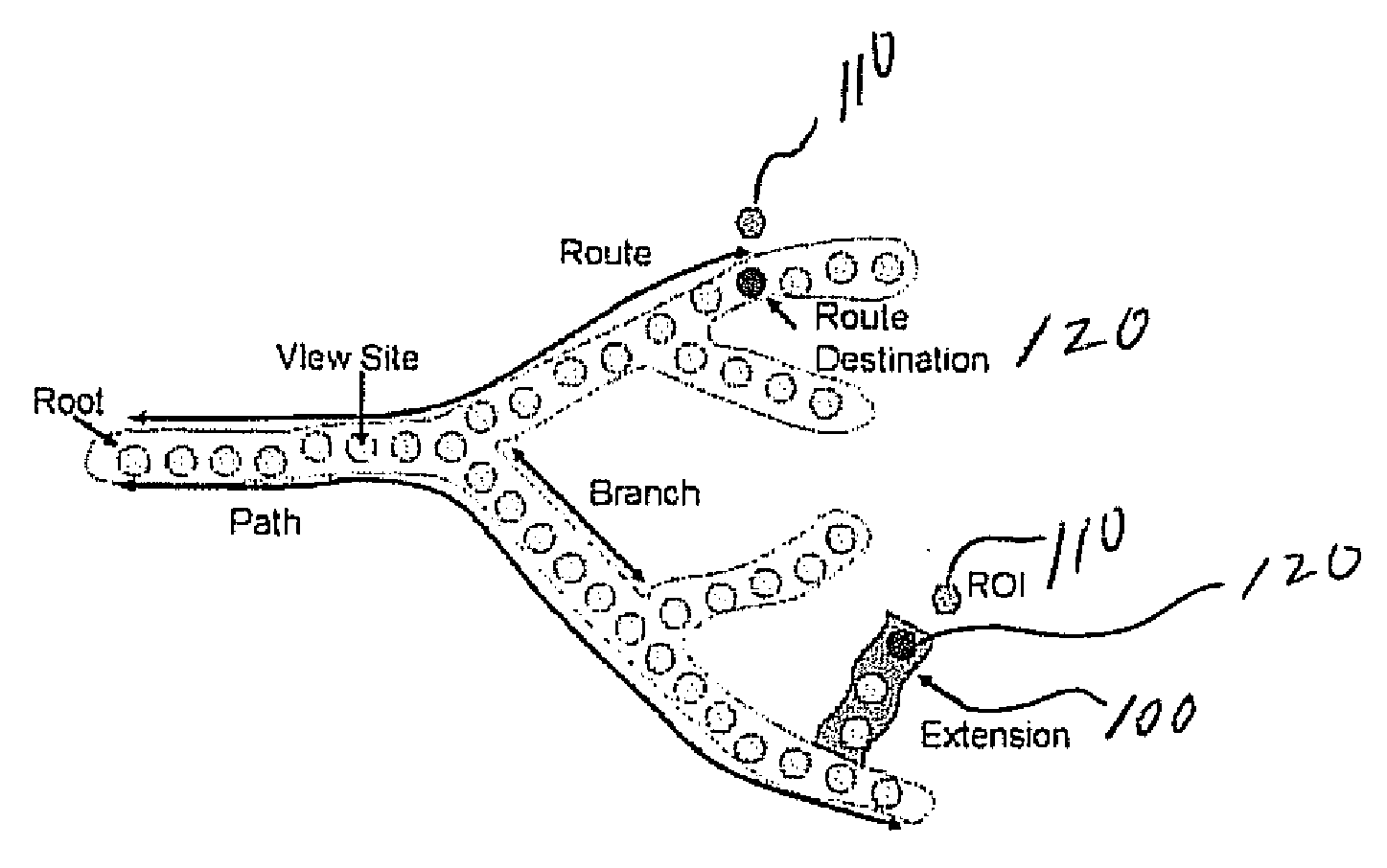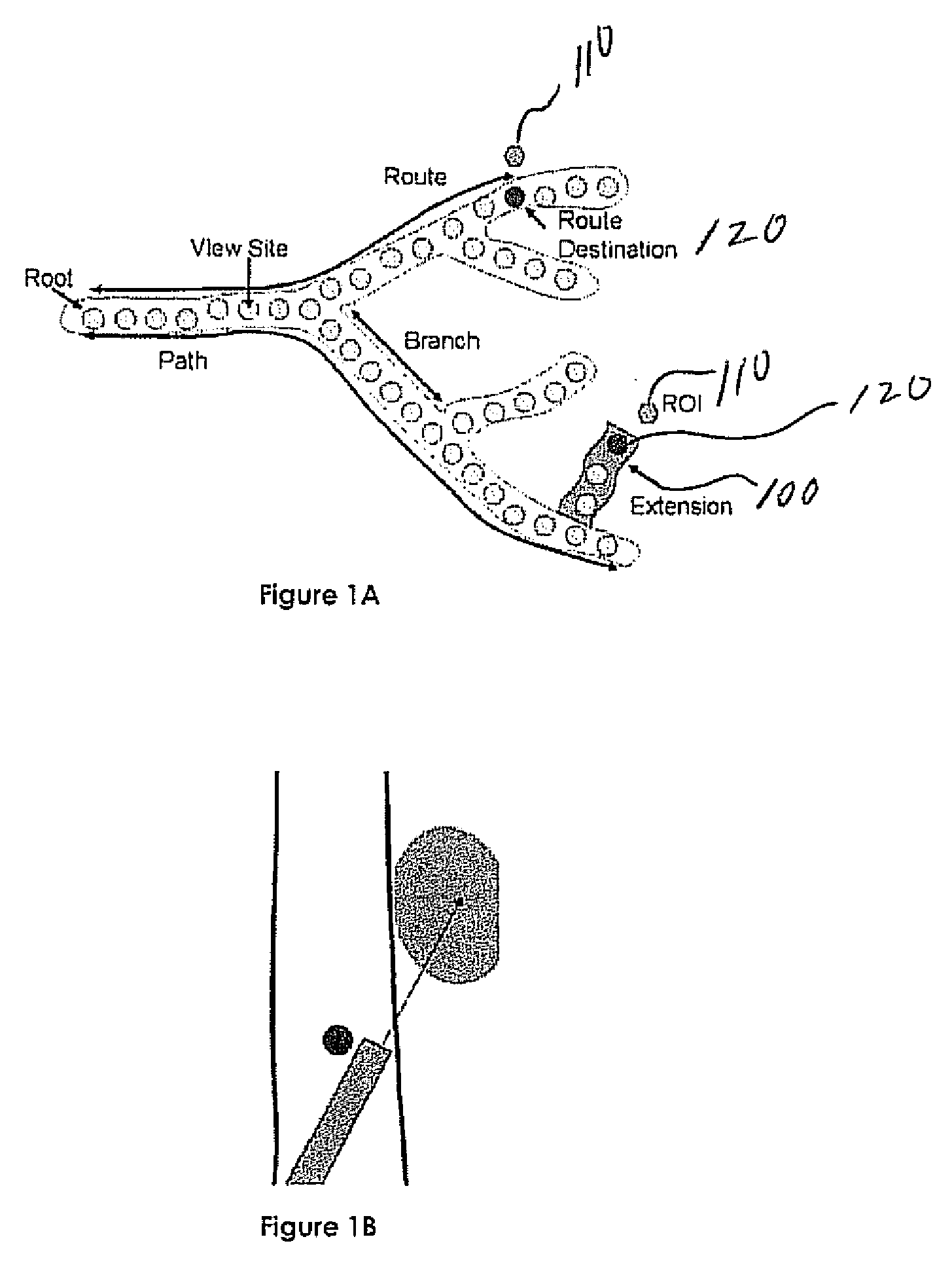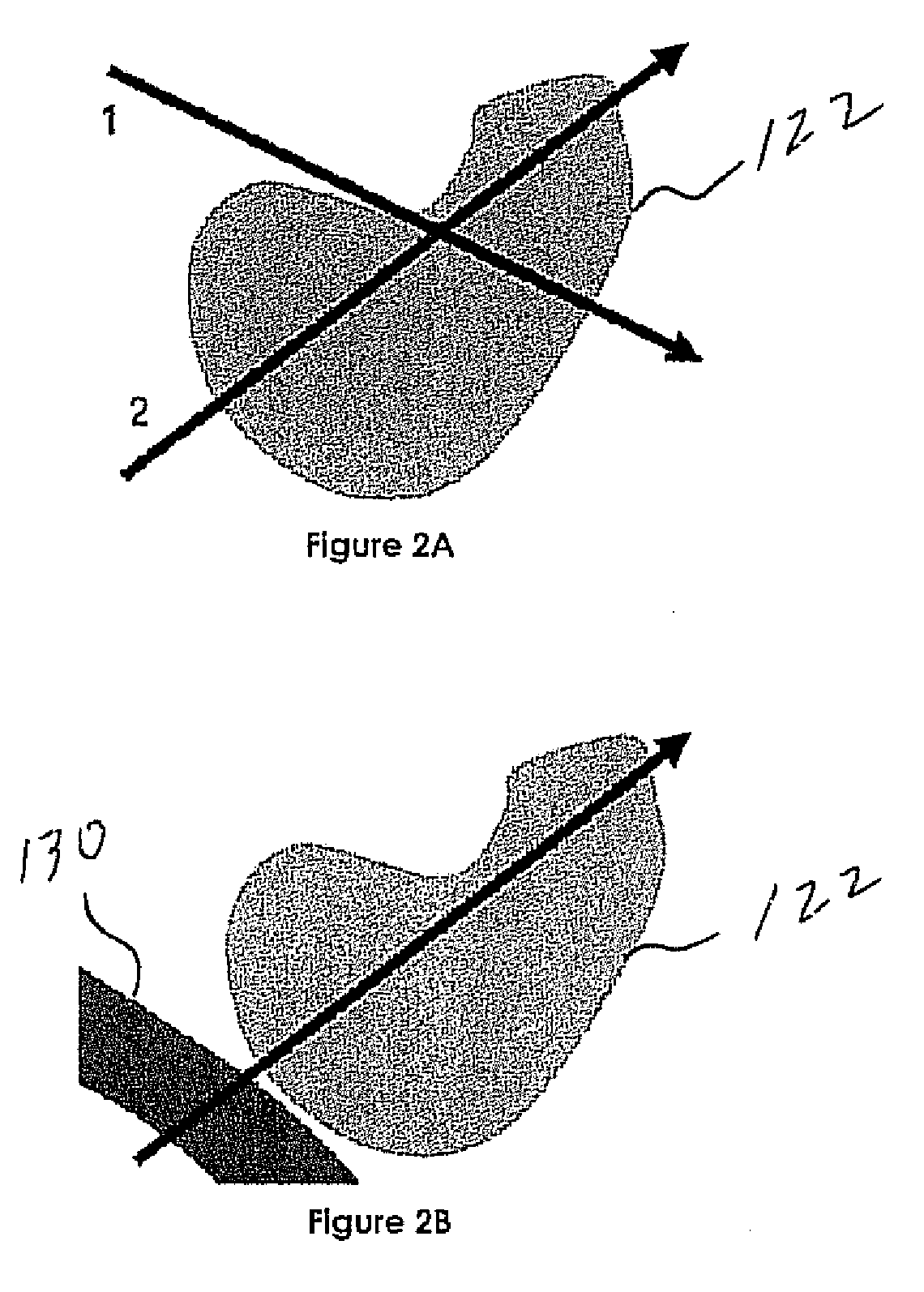Precise endoscopic planning and visualization
a planning and visualization technology, applied in the field of precise endoscopic planning and visualization, can solve the problems of difficult bronchoscopy, high cost, and high difficulty of bronchoscopy, and achieve the effect of ensuring the safety of the patien
- Summary
- Abstract
- Description
- Claims
- Application Information
AI Technical Summary
Benefits of technology
Problems solved by technology
Method used
Image
Examples
example
[0129]We have conducted an MDCT image-analysis study to determine the efficacy and performance of a pose-orientation selection strategy in accordance with the present invention. In this study, we examined high-resolution MDCT chest scans of 11 patients with 20 diagnostic ROIs in the central chest region, defined at the direction of a physician, that were identified for potential follow-on transbronchial needle aspiration (TBNA) procedures. The purpose of the study was to verify the route-planning methods give appropriate routes to ROIs in a clinically-reasonable timeframe while accommodating realistic procedural, anatomical, and physical constraints.
[0130]Table I, below, summarizes the cases examined in this study. For most patients, ROIs were located along the trachea or in a subcarinal position at Mountain stations M4 (lower paratracheal) and M7 (inferior mediastinal), which are typically accessible for TBNA with modern videobronchoscopes [26]. Patients 20349.3.29, 20349.3.37, and...
PUM
 Login to View More
Login to View More Abstract
Description
Claims
Application Information
 Login to View More
Login to View More - R&D
- Intellectual Property
- Life Sciences
- Materials
- Tech Scout
- Unparalleled Data Quality
- Higher Quality Content
- 60% Fewer Hallucinations
Browse by: Latest US Patents, China's latest patents, Technical Efficacy Thesaurus, Application Domain, Technology Topic, Popular Technical Reports.
© 2025 PatSnap. All rights reserved.Legal|Privacy policy|Modern Slavery Act Transparency Statement|Sitemap|About US| Contact US: help@patsnap.com



